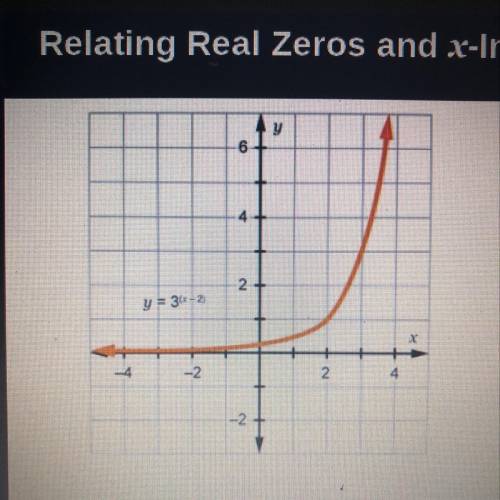How would you explain the relationship between
the real zero(s) of the function and x-intercep...

Mathematics, 11.04.2020 02:53 911wgarcia
How would you explain the relationship between
the real zero(s) of the function and x-intercept(s) of
the graph?
Since the graph crosses the x-axis at x = -2,
the function has a real zero of x = -2.
Since the graph never crosses the x-axis, the
function has no real zeros.
Since the graph eventually crosses the x-
axis, the function has a real zero.
Since the graph crosses the y-axis at 9, the
function results in a real zero of x = 9?.


Answers: 3


Another question on Mathematics

Mathematics, 21.06.2019 19:10
Which graph represents the function g(x) = |x + 4| + 2?
Answers: 1

Mathematics, 21.06.2019 20:30
How do you determine if an ordered pair is a solution to a given equation?
Answers: 1

Mathematics, 21.06.2019 22:10
Which equation is y = -6x2 + 3x + 2 rewritten in vertex form?
Answers: 1

Mathematics, 21.06.2019 23:40
20 ! jason orders a data set from least to greatest. complete the sentence by selecting the correct word from each drop-down menu. the middle value of the data set is a measure and is called the part a: center b: spread part b: mean a: mean absolute deviation b: median c: range
Answers: 1
You know the right answer?
Questions




English, 08.10.2019 23:00

Biology, 08.10.2019 23:00

















